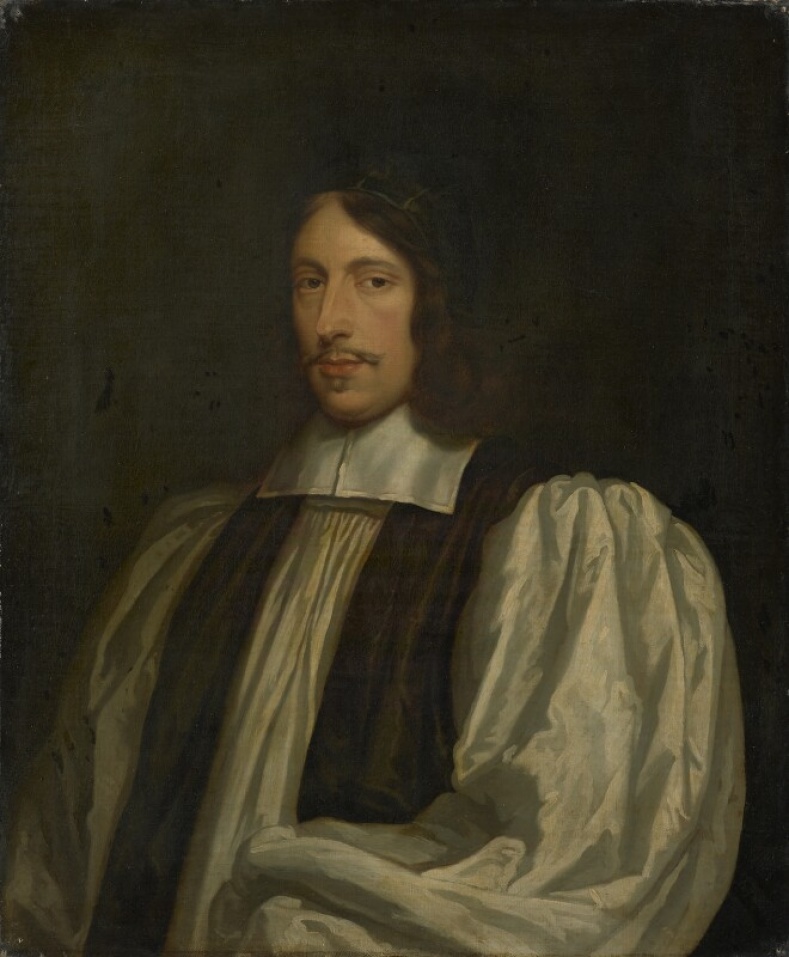
Crewe, Nathaniel
1633-1721
Bishop of Durham
Nathaniel Crewe was born in Steane, Northampton, into the wealthy Crewe family. The fifth of six sons to John Crewe (1598-1679) and Jemima (nee Waldegrave, 1601-1675). Nathaniel was at first home-schooled at Steane, but aged 15 he was sent to the school of Mr Azall in Amersham, Buckinghamshire.
In 1653 Nathaniel matriculated to Lincoln College Oxford. His connection to the College would be lifelong, and his contributions to Oxford have been enduring. He graduated with a BA in 1656. Two years later he received his MA and was elected fellow in canon law at Lincoln. In 1659 he was made sub-rector at the age of 26. In reality, as deputy to the aged and blind Rector Hood, Nathaniel had almost full responsibility for the administration of the college. In 1668 he succeeded Hood.
By this time, however, Crewe’s ambitions had grown. Nathaniel seems to have been responsive to the political climate, no small feat in the 17th century. The English Civil War (1642-1646 and 1648-1649) had exposed deep religious and political divides. As the son of a notable Presbyterian, Crewe made efforts as sub-rector to change his outward appearance to appear more Anglican.
When the restored Charles II visited Oxford he was so impressed by Crewe that he offered him a knighthood, which was turned down in favour of his academic career. He did, however, accept the position of King’s Chaplain in 1666 and the rectory of Gedney, a position that provided income with little real responsibility.
His proximity to the court provided Nathaniel access to the most powerful and influential families in the country, non-more so than the Kings own brother, James, the Duke of York. His relationship with James was close and reciprocal. Nathaniel provided James support from the church and, in return, James provided Nathaniel with his largest source of income, the See of Durham in 1673. Crewe later increased his wealth through the inheritance of his father’s and brother’s estates and the purchase of the Bamburgh estates which he bought from the Crown after they had been placed in Chancery to pay the debts of his second wife, Dorothy Forster (1672-1715). Crewe was granted further positions and honours upon James II ascension to the throne in 1685.
Unfortunately for Nathaniel, so much of his wealth and influence was directly the result of his close relationship with the King, and King James II was deeply unpopular. The ‘Glorious Revolution’ of 1688 forced both James II and Nathaniel into exile. Crewe spent months on the continent until it was safe to return to England, and when he did his power was greatly diminished.
Out of favour, Nathaniel retreated to Durham and focused his efforts on improving the Palatine of Durham and on finding a wife. He fell in love with the daughter of Sir William Forster (1667-1700), Dorothy (1672-1715), but was refused her hand due to her youth. After the death of his first wife, Penelope in 1699 (b.1655), Nathaniel was allowed to marry Dorothy. It is perhaps through Dorothy that Lord Crewe formed his deep and lasting connection to Northumberland.
When his father-in-law, Sir William Forster, died in 1700, Dorothy inherited the estate along with her nephew, Thomas Forster. Thomas would later take part in a doomed Jacobite uprising in 1715 but before then Crewe had bought his share of the Forster estate for over £20,000. This allowed Thomas to pay off family debts and would later endow the Crewe Charity with a landed estate (including Bamburgh Castle and Blanchland) that may otherwise have been confiscated by the crown when Thomas was forced into exile in 1716.
When Dorothy died in 1715 she was buried in Steane, Nathaniel was buried next to her six years later at the age of 88. In his lifetime he had accrued enormous wealth through prominent academic and ecclesiastical positions, his favour in the courts of King William, James II and Queen Anne, and the estates he inherited from his father, his brothers and of the purchase of the Forster Family estates. His last act was to produce a will distributing his wealth to charitable causes in perpetuity under the direction of five trustees.
His will provided the foundation for the Lord Crewe’s Charity, which has survived since 1721. The will dictated several annual payments that the trustees were bound to honour, including scholarships to Lincoln College, Oxford. The will also made an endowment to the University of Oxford and payments to the mayor of Durham specifically for the putting out and placing of apprentices.
References
Blackburn, C. (2018) Blanchland history, Available here (Accessed: 06/08/2018).
Blanchland Community Development Organisation. (2018) Blanchland History. Available here (Accessed: 06/08/2018).
Charity Commission: Crew Trust (2018) Available here (Accessed: 06/08/2018).
Johnson, M. (2004). Crew [Crewe], Nathaniel, third Baron Crew, Available here (Accessed: 30/05/2018).
Lincoln College (2018) Lincoln College History. Available here (Accessed: 06/08/2018).
Lomas, R. (2009). An encyclopaedia of North-East England, Edinburgh: Birlinn Ltd, pp. 119-20.
Lord Crewe’s Charity. (2018) Available here (Accessed: 06/08/2018).
National Archive - Lord Crewe Entry. (2018). Available here (Accessed: 06/08/2018).
Stranks, C.J. (1976). The charities of Nathaniel, Lord Crewe and Dr John Sharp 1721-1976, Chester le Street: City Printing.
Whiting, C.E. (1940). Nathaniel Lord Crewe Bishop of Durham, 1674-1721, and his Diocese. London: Macmillan Company.